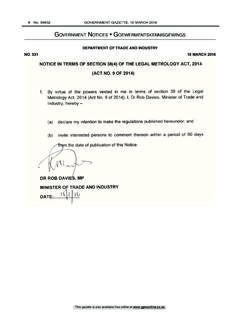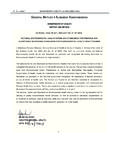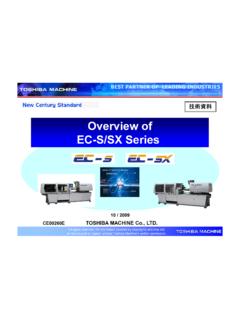Transcription of Prepared for the South African Medical Device Industry ...
1 Industry overview and economic impact assessment for the South African Medical technology Industry Prepared for the South African Medical Device Industry Association (SAMED) Glossary ANVISA Agencia Nacional de Vigilancia Sanitaria [National Health Surveillance Agency] ARGMD Australian Regulatory Guidelines for Medical Devices ARTG Australian Register of Therapeutic Goods BBBEE Broad Based Black Economic Empowerment CAGR Compound Annual Growth Rate CE Conformit Europ enne [European Conformity] CSIR Council for Scientific and Industrial Research DBSA Development Bank of Southern Africa DST Department of Science and Technology DTI Department of Trade and Industry EUCOMED European Confederation of Medical Suppliers Association EIA Economic Impact Assessment FDA Food and Drug Administration (USA)
2 GHTF Global Harmonization Task Force GMDN Global Medical Device Nomenclature GMP Good Manufacturing Practice HTA Health Technology Assessment IDC Industrial Development Corporation IMDRF International Medical Device Regulators Forum ISO International Organisation for Standardisation MCC Medicines Control Council MRC Medical Research Council NDOH National Department of Health NDP National Development Plan NHI National Health Insurance PBS Pharmaceutical Benefits Scheme [Australia] PIC Public Investment Corporation PFMA Public Finance Management Act R&D Research & Development ROI Return On Investment SABS South African Bureau of Standards SADC Southern African Development Community SAHPRA South African Health Products Regulatory Authority SALDA South African Laboratory Diagnostics Association SAMED South African Medical Device Industry Association SHIP Strategic Health Innovation Partnership SME Small and Medium Enterprises TGA Therapeutics Goods Administration [Australia] TIA Technology Innovation Agency TUV Technischer Uberwachungsverein [Technical Inspection Association]
3 WHO World Health Organisation Executive summary About Medical technology Medical technologies are described as Medical devices, in vitro diagnostics, imaging equipment and e-health solutions used to diagnose, monitor, assess predispositions and treat patients suffering from a wide range of conditions1. It covers a broad range of products like wheelchairs, hip prosthesis, cardiac stents, syringes and MRI-scanners to name a few. Medical technology helps people live healthier and longer lives and is an indispensable necessity to any health system. Moreover continuous innovations in Medical technology enhance the effectiveness and quality of care. Why this document? SAMED has commissioned KPMG to estimate the size of the Medical technology market in South Africa, the Medical technology market s impact on the economy and to explore what lessons can be learnt from other countries in terms of regulating the Medical technology Industry .
4 The information presented in this document is based on survey results of 47 Medical technology companies. Global Medical technology market The global Medical technology market is estimated at a value of US $ 270 billion. Drivers for growth in the Medical technology market are; demographic trends in both developed (ageing) and developing countries (move from communicable to non-communicable diseases); convergence across all segments of healthcare and innovation in technology. South African Medical technology market The South African Medical technology market has an estimated value of US $ billion and constitutes of the global Medical technology market. The average revenue for multinational Medical technology companies (R 283 million per annum, per company) is more than the revenue for local Medical technology companies (R million per annum, per company).
5 The majority of companies import Medical technology products from other parts of the world. It is therefore no surprise that the volume of imported products exceed the volume of exported products in monetary terms. In terms of exports, most products are exported to other African countries (80% of total export of Medical technology products). South Africa s health system is described as a dichotomous system with well-developed private sector and a burdened public sector. The Medical technology market derives most of its revenues from clients in the private sector (70%) when compared with clients in the public sector (30%). The Medical technology Industry employs over 3 600 people and Medical technology companies are on average BBBEE level 4 contributors. The average BBBEE rating is lower for local manufacturers when compared to multinationals.
6 Medical technology companies spent a total of R million on sponsorship and R million on training healthcare professionals that use their products. Sector contribution Medical technology Industry respondents to the Industry survey raised concerns regarding the import of substandard Medical technology products. According to respondents this hampers fair competition, specifically on price for quality products, and is exacerbated by the lack of a quality regulator for Medical devices in South Africa. The majority of Medical technology companies would support the establishment of a quality regulator. Other matters raised by respondents include the lack of transparency in government tender processes, delayed payment from major public sector clients, the relative power of private sector healthcare funders in approving reimbursement for Medical technology products or not, the limited appreciation for and availability of funds for Research & Development (R&D) of Medical technology products in South Africa.
7 Economic impact The Medical technology Industry s overall contribution to the national economy is estimated at R billion. The associated economic multiplier is calculated at , this means that for every additional R 1 spent in the national economy by the Medical technology Industry , an additional 25 cents is 1 Medical Technology Contribution to Europe s Health, Innovation and Economy, MedTech Europe, 2013. generated in economic activity. Capital and operational expenditure by the Medical technology Industry resulted in supporting a total of 20 901 jobs. Lastly, the tax revenue generated by the Medical technology Industry during the period under review is estimated at R billion. All the numbers presented above are the consequence of direct, indirect and induced impact expenditures of the Medical technology Industry have on the broader economy.
8 Besides economic impact, Medical technology adds value to patients, healthcare professionals and, more generally, the health system. Regulation The South African Medical technology Industry is mainly unregulated, except for a few regulated Medical technology product categories ( products that emit a radio frequency and electromagnetic products). Although the government intends to establish a national quality regulator, SAHPRA ( South African Health Products Regulatory Authority), it is uncertain at this point in time when this regulatory body will be established and start operating. Although most respondents of the survey strongly support the implementation of quality regulation, most oppose price regulation. Brazil and Australia are two countries included in this report to serve as a benchmark for quality regulation.
9 Lessons learnt from these countries ( regulations implemented that had a positive impact on the Medical technology Industry ) are the establishment of a quality regulator, forming free trade zones with neighbouring countries (Brazil), and a highly educated population (Australia). Conclusion This document contains three takeaways for the broader health economy: Continue the drive for quality regulation. Use existing innovation-platforms and incentivise Industry to grow R&D investments Unite, collaborate and share insights with key stakeholders and the population. SAMED invested significantly in this project and hence the following applies; for those who wish to obtain a copy of the report: One hard copy of the report will be provided free of charge to those who participated in the survey.
10 The cost of additional hard copies for participants will be R 500 per copy. SAMED members who did not participate, but wish to have a copy will be charged R 500 per copy. For all other parties, the cost of a hard copy will be R 2 000. Contents 1 Introduction 1 Why this report? 1 Reading guide for this report 1 The information used in this report 1 Limitations of scope 2 Disclaimer 2 2 Industry Analysis 3 Introduction 4 South Africa s healthcare system 4 What is Medical technology? 6 The global Medical technology market 9 The South African Medical technology market 11 3 Economic Impact Assessment 27 Overview of approach 28 Introduction to the economic modelling impact results 31 The value Medical technology brings to people s lives, beyond economic impact on the country 34 Economic Impact on the National development plan 35 4 Regulatory Environment 37 Introduction 38 South African regulatory environment 38 A brief overview of the countries involved 42 Brazil 43 Australia 45 Lessons learnt 46 5 Conclusion 48 Three key takeaways 49 Closing remarks 50 Appendix 1 Background information on National Health Insurance (NHI)









